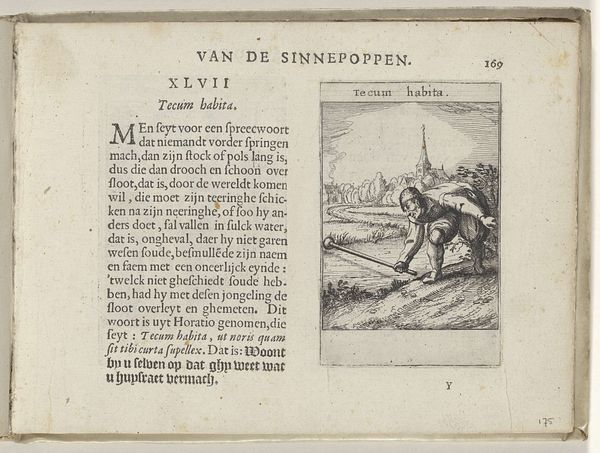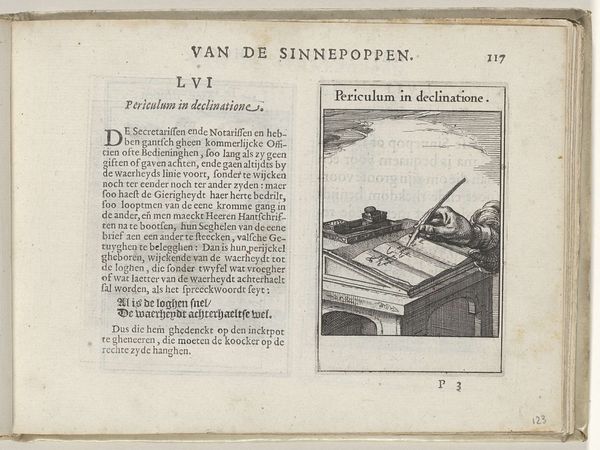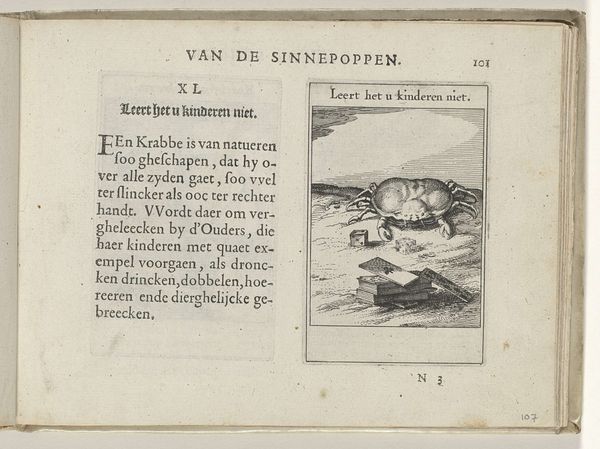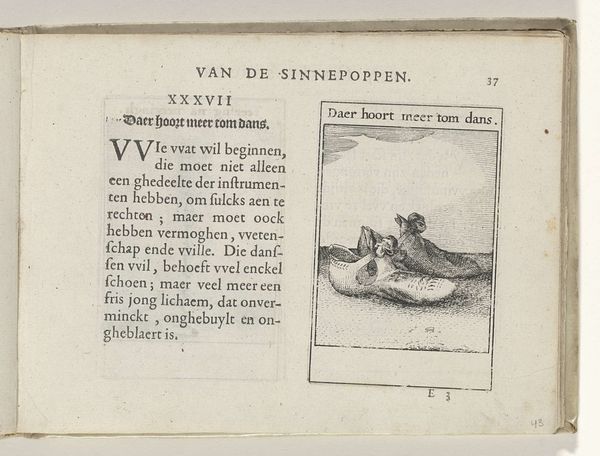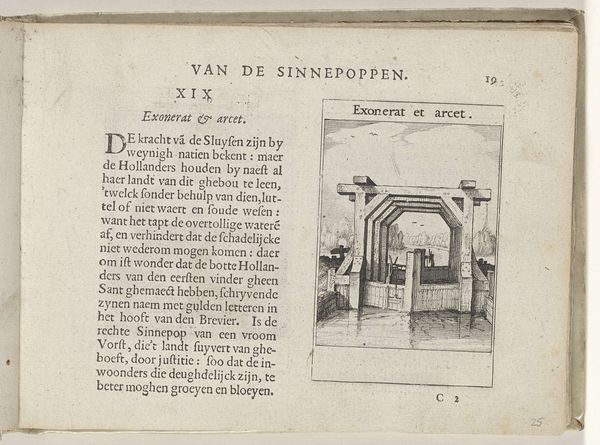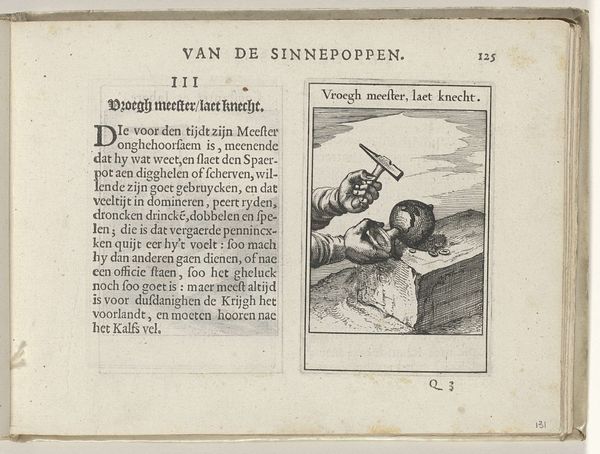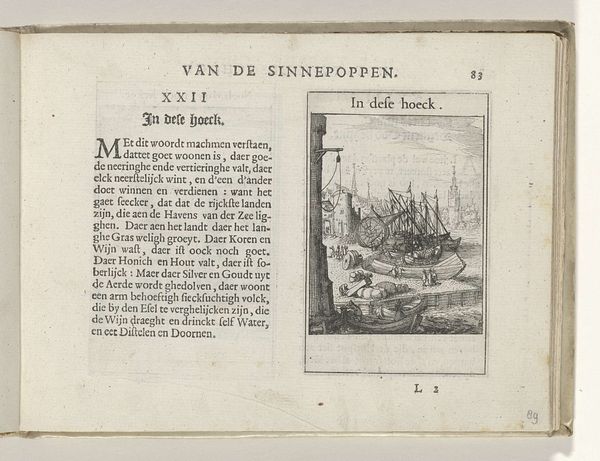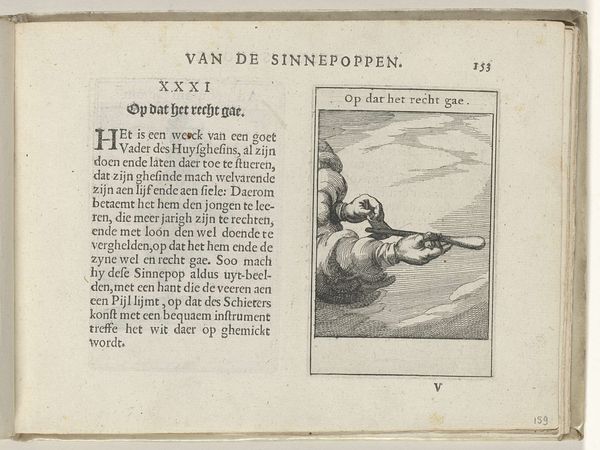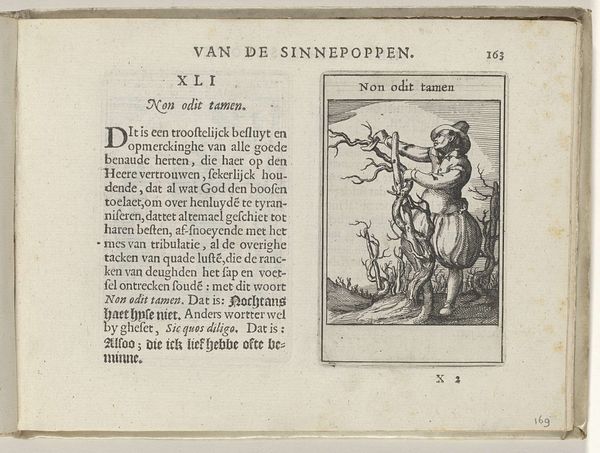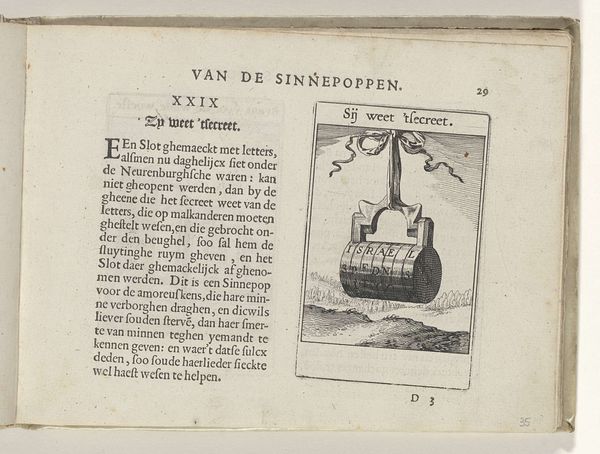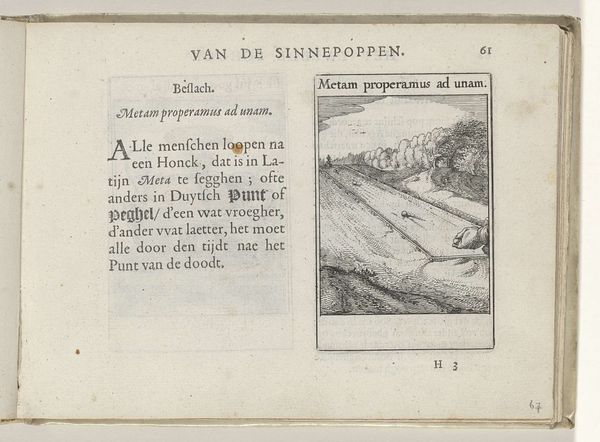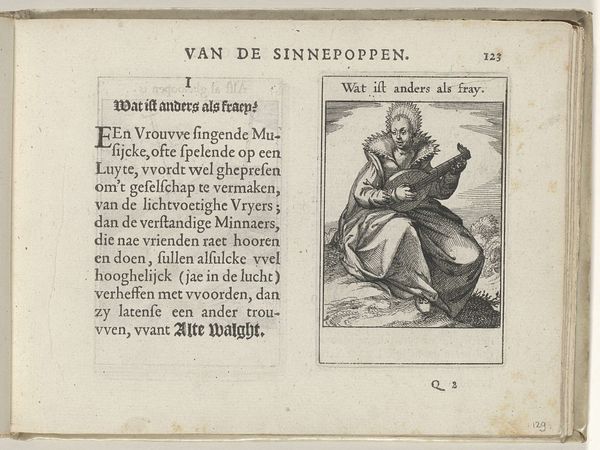
print, paper, engraving
#
dutch-golden-age
# print
#
paper
#
11_renaissance
#
engraving
Dimensions: height 137 mm, width 188 mm, height 95 mm, width 60 mm
Copyright: Rijks Museum: Open Domain
Curator: I'm struck by the sheer contrast in this print, the heavy lines of the plow dominating the composition. It feels so stark against the page. Editor: Well, that directness is purposeful. What we have here is "III Evertit sed aptat," a 1614 engraving on paper by Roemer Visscher, housed in the Rijksmuseum. Curator: Right. Visually, the dark engraving against the white is compelling; the texture creates such a palpable sense of materiality despite being a print. What’s intriguing is the formal treatment of this simple, agricultural object: the plow is centered, given this monumental quality through the print. Editor: Absolutely. In its time, such simple agricultural imagery was rooted in didactic symbolism—often serving as allegories to convey deeper social and ethical lessons to a growing merchant class. Curator: Precisely! Visscher carefully delineates line, shadow, and shape with intention, prompting close analysis that helps expose the larger narrative: something tears down so that other things may take root and be made. Editor: Yes, because the phrase "Evertit sed aptat" essentially means, "It destroys, but it fits." It invites consideration around the act of transforming land but also around social upheaval. The plow disrupts, turns everything over. It references an older order collapsing as well. Curator: Indeed. The plow is not only this raw and elemental thing of function; in Visscher's print, it stands as something symbolic in relation to society, of action. The strong tonal and tactile properties help draw our gaze again and again. Editor: For our contemporary ear, the print asks crucial questions: What is progress? How does something become progressive in the face of change? The placement on the page feels intimate, beckoning consideration in light of the sociopolitical transformations then, and, dare I say it, now. Curator: It’s quite captivating how effectively the print is balanced overall—not just visually—but by creating layers of intellectual questions for audiences to engage with! Editor: It really does give pause to all our preconceptions about progress! Thank you for illuminating these connections.
Comments
No comments
Be the first to comment and join the conversation on the ultimate creative platform.
